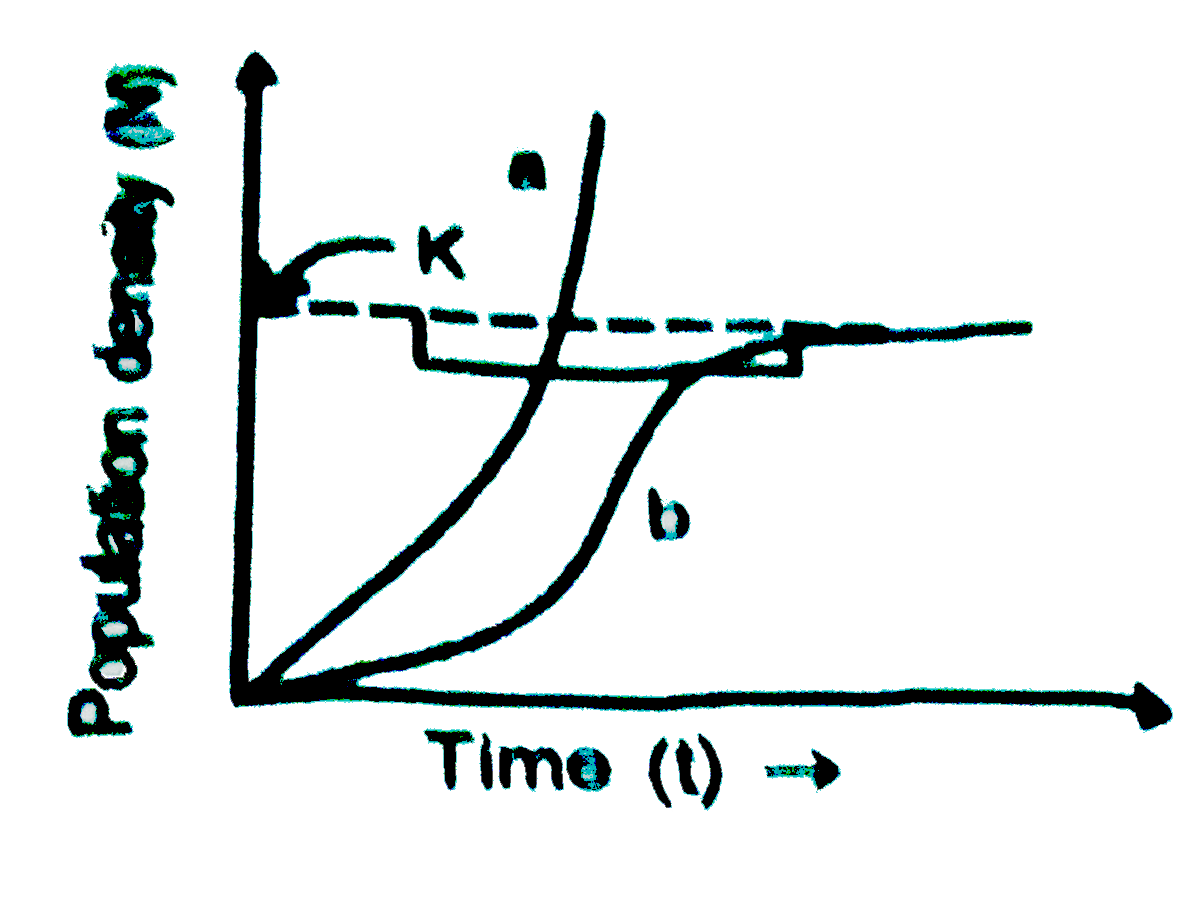The population growth is generally described by the following equation : dNdt=rN(K−NK) What does 'r' represent in the given equation ?
Population density at time 't'
Intrinsic rate of natural increase
Carrying capacity
The base of natural logarithm
The correct Answer is:B
To solve the question regarding what 'r' represents in the population growth equation dNdt=rN(K−NK), we can follow these steps:
1. Understand the Equation: The equation given is a representation of population growth, specifically the logistic growth model. This model accounts for limited resources, which affects how populations grow over time.
2. Identify Components of the Equation:
- dN/dt: This term represents the rate of change of the population size (N) over time (t).
- N: This is the current population size or density.
- K: This represents the carrying capacity of the environment, which is the maximum population size that the environment can sustain due to limited resources.
- r: This is the intrinsic rate of natural increase.
3. Define 'r': The intrinsic rate of natural increase (r) is calculated as the difference between the birth rate and the death rate of the population. It indicates how quickly a population can grow under ideal conditions, without any limiting factors.
4. Conclusion: Therefore, in the context of the logistic growth model, 'r' is a crucial parameter that reflects the potential growth rate of the population when resources are not limiting.
Final Answer:
In the equation dNdt=rN(K−NK), 'r' represents the intrinsic rate of natural increase of the population.
---
- dN/dt: This term represents the rate of change of the population size (N) over time (t).
- N: This is the current population size or density.
- K: This represents the carrying capacity of the environment, which is the maximum population size that the environment can sustain due to limited resources.
- r: This is the intrinsic rate of natural increase.
In the equation dNdt=rN(K−NK), 'r' represents the intrinsic rate of natural increase of the population.
Topper's Solved these Questions
- BOOK - NCERT FINGERTPS ENGLISHCHAPTER - ORGANISMS AND POPULATIONEXERCISE - HOTS5videos
ORGANISMS AND POPULATION
- BOOK - NCERT FINGERTPS ENGLISHCHAPTER - ORGANISMS AND POPULATIONEXERCISE - NCERT20videos
ORGANISMS AND POPULATION
- BOOK - NCERT FINGERTPS ENGLISHCHAPTER - MOLECULAR BASIS OF INHERITANCEEXERCISE - Molecular Basis Of Inheritance151videos
MOLECULAR BASIS OF INHERITANCE
- BOOK - NCERT FINGERTPS ENGLISHCHAPTER - PRACTICE PAPERSEXERCISE - Practice paper150videos
PRACTICE PAPERS
Similar Questions
Study the graph given below and answer the questions that follow :
(i) The curve 'b' is described by the following equation :
dNdt=rN{K−NK}
(ii) What does 'K' stand for in this equation ? Mention its significance.
(ii) Which one of the two curves is considered a more realistic one for most of the animal populations ?
(iii) Which curve would depict the population of a species of deer if there are no predators in the habitat ? Why is to so ?
 View Solution
View SolutionIn the equation,dN/dt=rN
View SolutionComplete the following equations :
K+H2O→View SolutionWhat does 'K' represent in the equation given below?
dNdt=rN(K−NK)View Solutionwhich of the following option is true for verhulst Pearl logistic growth?
(A)population growth is decreased by the equation dNdt=rN[KK−N].
(B) r' represents biotic potential.
(C) applicable to a population growing in habitat with limited resources.
(D)K represents carrying capacityView SolutionArithmetic growth curve is represented by which of the following equation?
View SolutionWhat is 'r' in the population equation given : dN/dt = rN
View SolutionCarrying capacity in equation dNdt=rN[K−Nk] is :
View SolutionComplete and balance the following equation : K+O2→
View SolutionFind the general solutions of the following equation: tan3θ=cotθ
View Solution

